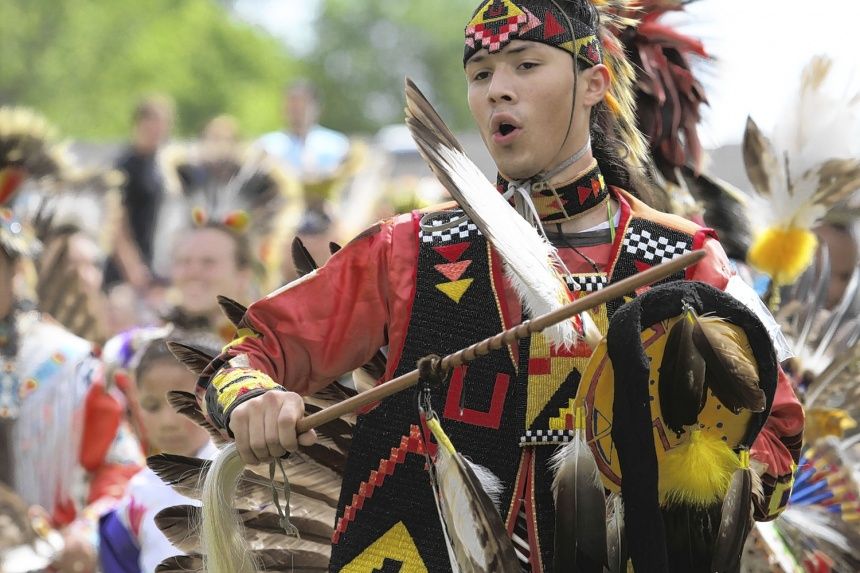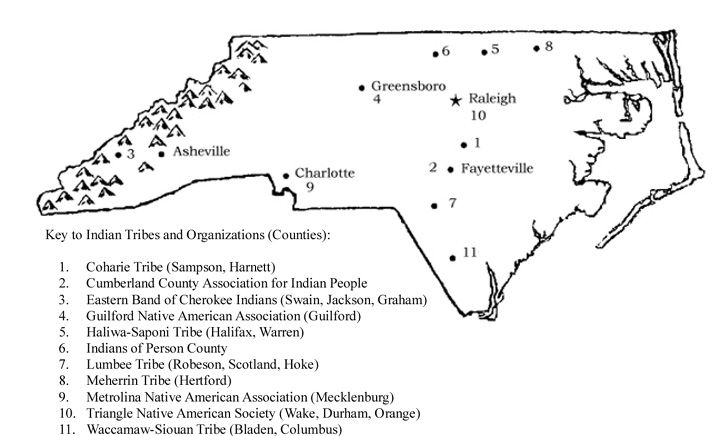A Tapestry of Tradition: Exploring the Native American Tribes of North Carolina
A Tapestry of Tradition: Exploring the Native American Tribes of North Carolina
.ffcc3a11.jpg)
North Carolina, a state steeped in history and natural beauty, is also home to a rich and diverse Native American heritage. From the mountains to the coast, the state has been inhabited by indigenous peoples for millennia, each with their own unique culture, traditions, and stories. This article delves into the fascinating world of the Native American tribes of North Carolina, exploring their history, culture, and ongoing efforts to preserve their legacy.
The Early Inhabitants: A Legacy of Resilience
Related Articles: A Tapestry of Tradition: Exploring the Native American Tribes of North Carolina
- Ojibwe Traditional Face Tattoos: Ancestral Adornment of Identity
- Uncover the Mysteries of Tocobaga: Florida’s Native Marvel!
- The Unbeatable Tale of the Legendary Turtle: A Mythical Marvel
- Unlock the Treasures of Native American Legacy
- Discover the Sacred Navajo Word for Homeland: A Journey to Dinétah
The earliest inhabitants of North Carolina were Paleo-Indians, who arrived around 13,000 years ago. These nomadic hunter-gatherers thrived in the diverse landscape, leaving behind archaeological evidence of their presence. As time progressed, more sophisticated cultures emerged, adapting to the environment and developing distinct ways of life.
The Arrival of European Colonists and the Impact on Native Tribes
The arrival of European colonists in the 16th century marked a turning point in the history of North Carolina’s Native American tribes. The colonists brought with them diseases, conflict, and a desire for land, leading to displacement, forced assimilation, and the decimation of many indigenous populations.
Recognized Tribes Today: A Tapestry of Diversity
Despite the challenges of the past, several Native American tribes have persevered and continue to thrive in North Carolina. The state officially recognizes eight tribes, each with a unique history, language, and cultural identity:
- The Cherokee: The largest and most well-known tribe in North Carolina, the Cherokee have a long and rich history in the state. They were originally known as the "Ani-Yun-Wiya" (People of the Real People) and lived in the mountainous regions of western North Carolina. The Cherokee are renowned for their distinctive language, their matrilineal social structure, and their rich oral traditions. The Cherokee Nation is headquartered in Tahlequah, Oklahoma, with a substantial population in North Carolina.
- The Eastern Band of Cherokee Indians: The Eastern Band of Cherokee Indians is the only federally recognized tribe in North Carolina. They reside in the Qualla Boundary, a 56,000-acre reservation in the Smoky Mountains. The Eastern Band is known for its cultural preservation efforts, including the Cherokee language, traditional arts and crafts, and the renowned Cherokee Indian Fair held annually in August.
- The Lumbee Tribe of North Carolina: The Lumbee Tribe is the largest Native American tribe in the state, with a rich history and a distinct cultural identity. They reside primarily in Robeson County and are known for their strong sense of community and their commitment to preserving their language and traditions. Despite facing challenges in obtaining federal recognition, the Lumbee Tribe has achieved significant milestones in self-governance and cultural revitalization.
- The Haliwa-Saponi Tribe: The Haliwa-Saponi Tribe is a small but vibrant community located in Warren County. They are descendants of the Saponi and Occaneechi tribes, who were originally located in the Piedmont region of North Carolina. The Haliwa-Saponi Tribe is known for its traditional pottery, basketry, and its efforts to preserve its language and cultural heritage.
- The Meherrin Tribe: The Meherrin Tribe is a small community located in Bertie County. They are descendants of the Meherrin people, who lived along the Meherrin River. The Meherrin Tribe is known for its strong sense of community and its commitment to preserving its traditions.
- The Mattamuskeet Tribe: The Mattamuskeet Tribe is a small community located in Hyde County. They are descendants of the Mattamuskeet people, who lived on the shores of Lake Mattamuskeet. The Mattamuskeet Tribe is known for its traditional fishing and hunting practices and its efforts to preserve its cultural heritage.
- The Waccamaw Siouan Tribe: The Waccamaw Siouan Tribe is a small community located in Columbus County. They are descendants of the Siouan people, who lived along the Waccamaw River. The Waccamaw Siouan Tribe is known for its traditional fishing and hunting practices and its efforts to preserve its language and cultural heritage.
- The Coharie Tribe: The Coharie Tribe is a small community located in Sampson County. They are descendants of the Coharie people, who lived along the Cape Fear River. The Coharie Tribe is known for its traditional farming and pottery practices and its efforts to preserve its cultural heritage.


Cultural Preservation and Revitalization: A Legacy for the Future
The Native American tribes of North Carolina are actively working to preserve their cultural heritage and ensure its transmission to future generations. This includes:
- Language Revitalization: Many tribes are actively working to revitalize their languages, which are facing the threat of extinction. This includes offering language classes, developing language resources, and creating immersion programs.
- Traditional Arts and Crafts: Traditional arts and crafts, such as pottery, basketry, beadwork, and carving, are integral to the cultural identity of many tribes. Tribes are working to preserve these traditions by providing training and support for artists and craftspeople.
- Cultural Education and Outreach: Tribes are working to educate the public about their history, culture, and traditions through museums, cultural centers, and educational programs.
- Self-Governance and Economic Development: Tribes are working to achieve greater self-governance and economic development, which will allow them to control their own destinies and build a better future for their communities.

Challenges and Opportunities: A Call for Respect and Understanding
Despite the progress made in cultural preservation and revitalization, Native American tribes in North Carolina continue to face challenges, including:
- Economic Disparities: Native American communities often face economic disparities compared to the general population. This includes high rates of poverty, unemployment, and limited access to healthcare and education.
- Environmental Concerns: Native American communities are particularly vulnerable to environmental degradation, such as pollution, deforestation, and climate change.
- Cultural Appropriation: The appropriation of Native American culture, including traditional clothing, music, and spiritual practices, can be hurtful and disrespectful.
It is essential to recognize the challenges faced by Native American tribes and to advocate for their rights and well-being. By promoting respect, understanding, and collaboration, we can create a more just and equitable future for all.
FAQ: Native American Tribes of North Carolina
Q: How many federally recognized tribes are there in North Carolina?
A: There is only one federally recognized tribe in North Carolina, the Eastern Band of Cherokee Indians.
Q: What is the largest Native American tribe in North Carolina?
A: The largest Native American tribe in North Carolina is the Lumbee Tribe.
Q: What is the difference between the Cherokee Nation and the Eastern Band of Cherokee Indians?
A: The Cherokee Nation is the larger tribal government based in Oklahoma, while the Eastern Band of Cherokee Indians is the federally recognized tribe in North Carolina.
Q: What are some of the cultural traditions of the Native American tribes of North Carolina?
A: Native American tribes in North Carolina have a wide range of cultural traditions, including traditional arts and crafts, languages, music, dance, storytelling, and spiritual practices.
Q: How can I learn more about the Native American tribes of North Carolina?
A: There are many resources available to learn more about the Native American tribes of North Carolina, including museums, cultural centers, websites, and books. You can also visit tribal websites and attend tribal events to learn firsthand about their culture and history.
Q: How can I support the Native American tribes of North Carolina?
A: There are many ways to support the Native American tribes of North Carolina, including visiting tribal businesses, attending cultural events, donating to tribal organizations, and advocating for their rights and interests.
Conclusion: A Journey of Resilience and Renewal
The Native American tribes of North Carolina have a rich and complex history, marked by both resilience and hardship. Today, they are actively working to preserve their cultural heritage and build a brighter future for their communities. By recognizing their contributions, understanding their challenges, and supporting their efforts, we can honor their legacy and foster a more inclusive and equitable society for all.

Closure
Thus, we hope this article has provided valuable insights into A Tapestry of Tradition: Exploring the Native American Tribes of North Carolina. We thank you for taking the time to read this article. See you in our next article!

